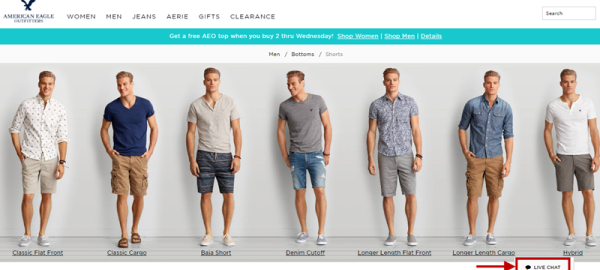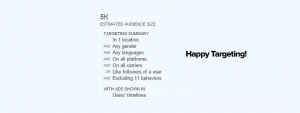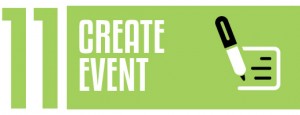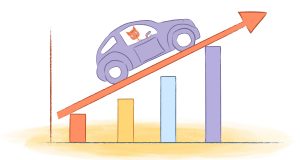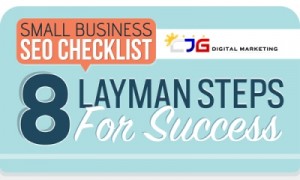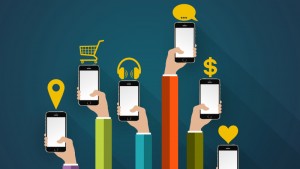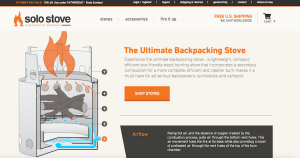We’ve covered the basics for landing pages many times here at WordStream, from our favorite landing page tips and tricks to the best landing page tools you can use to amplify your landing page performance. However, today I’d like to take a look at some landing page strategies that go beyond the basics, so you can take your landing pages to a new level of conversion power.
You may have seen some of these strategies for high-converting landing pages before, but I’d like to illustrate some of the more subtle points as to why and how they can make your customer experience stand out. Some of these strategies might, in fact, be new to you. Either way, these real-world examples should provide a spark that you can employ in your own landing page optimization efforts to get significantly higher conversion rates.
But first, a quick note on landing page conversion rate benchmarks.
What’s a High-Converting Landing Page?
Our research indicates that conversion rates vary by industry, but averages generally fall between 2% and 5% for AdWords advertisers.

Does that mean you should settle for average? Of course not! There are lots of businesses out there who have managed to achieve higher conversion rates. WordStream did a study in 2014 that showed some advertisers – the best of the best – were getting conversion rates of 10% or more. That’s what you want to aim for!

Now let’s get on to the strategies that will help you raise your landing page conversion rates.
1. Incentivize Your Visitors with an Irresistible Offer

Vitacost does a great job of making an offer that helps close the deal right away. I’m a huge proponent of giving new customers an incentive to take action right now, and after about five seconds on the site this enticing offer pops up—a 10 percent discount—and it’s something the main competition is not doing. Given this, I’d be more inclined to shop with Vitacost since they’re giving me immediate savings.
Additionally, the page itself gives a clean, well-laid-out impression, and it makes the benefit statement clear: save up to 37 percent on organic foods. Specificity sells, and pinpointing it at this granular level makes it more believable.
Ultimately, the main takeaway here is that the offer provides visitors with something they can use right now.
2: Limit Choices

In this example for project management software, Wrike takes minimalism to the extreme. Often with software you’re given multiple choices, but in this case Wrike limits the offer to one main choice at ten dollars a month, billed annually, with a free plan available. They chose to use very little text and make the offer straightforward and to the point.
In this case they went counter to what’s normally recommended for lead gen situations, which is to use the standard three feature and benefit statements, include a list of plans available, and have a form to fill out.
In addition, this landing page stands out because of the eye-catching hero image, and it leverages credibility boosters with the Gartner mention and the big-name brand customers along the footer, both of which are best practices for landing pages.
3. Provide Customer Service with a Lighter Touch


Live chat is nothing new, but in this case American Eagle offers it in a less intrusive way than many others do. There’s little more annoying than the chat pop-up that comes out of nowhere like a pushy salesperson. In this case when searching for “men’s shorts,” the live chat sits in the corner ready for you if you want it. Of course, you have to give up your email address to use it—American Eagle wants to get something out of the chat, right?
In addition, American Eagle uses a nice header image that highlights their wide selection. We covered product-landing-page best practices recently here at WordStream if you want more tips on how to optimize them.
4. Go for a Test Drive

Webex’s landing page for webinar software really nails it when it comes to the test drive. You can either sign up as an individual or group to see the product in action before you decide to buy. This “hands-on” approach helps prospects visualize how they’d be able to use the software in their own lives, which can be a crucial deal-maker and help close sales.
The form is a bit long for my taste and would be something to test for sure. We covered landing-page forms last year and it warrants revisiting if you use a form on your landing pages.
In addition, following the three feature and benefit statements, Webex builds credibility a la McDonald’s by showing a running tally of the number of webinars they’ve hosted in the last month. This credibility booster falls right in line with what Dr. Rober Cialdini mentions as “social proof” in his widely read and quoted “Influence: The Psychology of Persuasion.” (If you haven’t read the book, I suggest you pick it up soon. It’s pre-internet but the principles stand the test of time.)
In the book Cialdini mentions that social proof—the fact that other people are using or buying the product—helps new prospects feel at ease about the purchase decision because they know lots of other people are customers too. I’ll reference more Cialdini later.
5. Provide Real-Time Social Proof

Similar to Webex’s running tally, Timberwolf Bay, a vintage home furnishings company, posts a running update of orders. You see where the person was and what they bought, and it’s updated in real time.
This little feature builds confidence in the company because, as Cialdini mentions, it implies that people just like you are buying from this website. Who wants to feel like they’re the only customer on a website? Also, it’s pretty fun to watch the orders pop up!
Another example (below) of this strategy comes from Zingerman’s, a popular food market in Ann Arbor, Michigan, except they put the running tally in the footer:

6. Use Scarcity and Urgency as Motivators
Here again Timberwolf Bay does a great job of using another of Cialdini’s principles: scarcity. When you’re looking for “timberwolf bay automobiles,” you’re shown the existing inventory. If you’re dying to get B.B. Korn Race Car, hurry. If you wanted the brass accordion “headlight” sconce, you’re out of luck.
Kidding aside, the real-time quantity updates can motivate people to buy now. Showing that an item sold out implies a) your company moves a lot of product and b) visitors need to take action because products DO sell out. The bottom line here is that scarcity motivates people to buy because we hate to feel like we’re going to miss out on something.
Building off the scarcity theme, we should also consider urgency. When we know a sale ends soon, we’re more apt to buy rather than wait. In the example below, Gilt does a great job with a countdown timer to let people know the sale ends soon, so they better act fast:

7. Show the Value

Everyone loves a deal, and on this page Eastbay does a good job highlighting how they’ve slashed the price on “men’s kobe shoes.” If Eastbay simply showed the new price, a visitor would have no context to put the price in perspective. Now, a potential customer will hopefully think “wow, this is a great deal, I need to take advantage of this.” At the very least, the shopper will bookmark this page to buy after doing some comparison shopping.
In addition, Eastbay highlights free shipping prominently in the header, so that’s even more incentive for the visitor to buy from this landing page.
The bottom line in this case: It pays to illustrate the value.
A Final Word on High-Converting Landing Pages
These have been just a few examples of landing pages that go beyond the basics of effective landing page strategy and execution. To be sure, landing pages and their tactics evolve constantly, and as digital marketers we have to always be testing to see what works.
What other strategies have you seen employed to create high-converting landing pages?
Find out how you’re REALLY doing in AdWords!
Watch the video below on our Free AdWords Grader:
Digital & Social Articles on Business 2 Community
(130)
Report Post